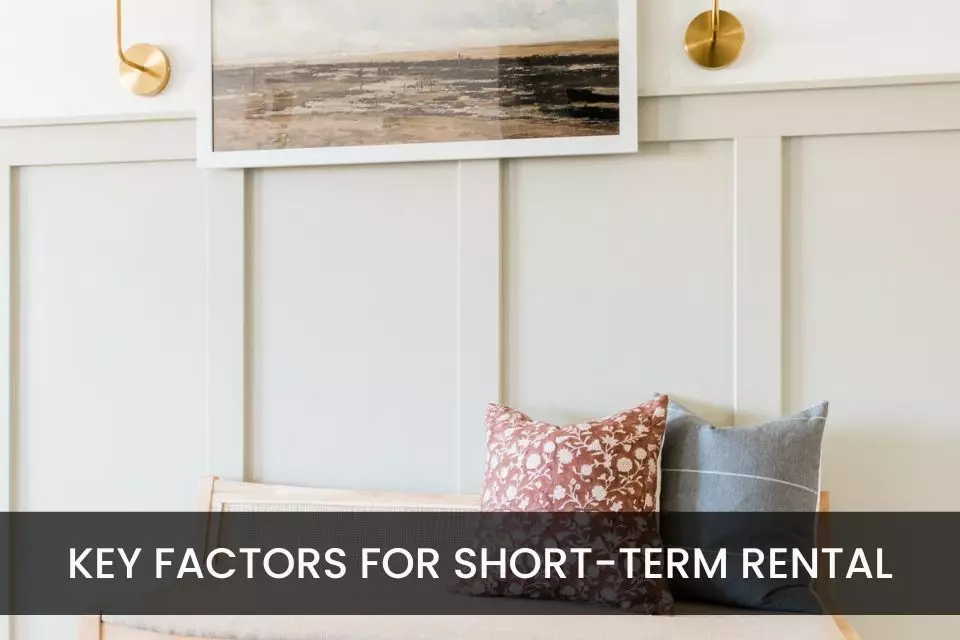How to Determine a Good Area for a Short-term Rental

Owning a successful short-term rental home is more than just finding a great property. Choosing a home to invest in is the only aspect of the
investment; the area is just as important. Just as you would before opening a store or restaurant, careful analysis should take place to determine the
opportunities an area offers. Here are a few key factors to consider:
·
Local Demand and Tourism – The best locations have some kind of independent demand, such as amusement parks, beaches or mountains,
or other popular vacation destinations.
·
Amenities – People enjoy pools, parks, and shopping while vacationing. Consider what activities and amenities are available to renters.
·
Local Regulations – Carefully investigate the local laws and regulations governing short-term rentals. Some communities only allow 30+
day rentals or even longer (if at all).
·
Competition – Review existing short-term rentals in the area and check pricing. Spot check a few of the most appealing for availability to
learn about vacancy rates. Make sure the prices and availability fit with your cost model.
·
Seasonality – Consider whether the area has peak seasons with slower months in between. Understand the trends and plan for lower
occupancy and pricing during the low season.
·
Growth and Development – Understand the future development plans in the community. Planned improvements may offer increased
desirability for the rentals.
A short-term rental can be a powerful addition to your investment portfolio.
Carefully selected and managed, these rentals can offer significant income while appreciating in value over time. Before choosing a home, ensure
success by carefully considering the location. The desirability of the area is one of the most crucial factors in a successful short-term rental business.
investment; the area is just as important. Just as you would before opening a store or restaurant, careful analysis should take place to determine the
opportunities an area offers. Here are a few key factors to consider:
·
Local Demand and Tourism – The best locations have some kind of independent demand, such as amusement parks, beaches or mountains,
or other popular vacation destinations.
·
Amenities – People enjoy pools, parks, and shopping while vacationing. Consider what activities and amenities are available to renters.
·
Local Regulations – Carefully investigate the local laws and regulations governing short-term rentals. Some communities only allow 30+
day rentals or even longer (if at all).
·
Competition – Review existing short-term rentals in the area and check pricing. Spot check a few of the most appealing for availability to
learn about vacancy rates. Make sure the prices and availability fit with your cost model.
·
Seasonality – Consider whether the area has peak seasons with slower months in between. Understand the trends and plan for lower
occupancy and pricing during the low season.
·
Growth and Development – Understand the future development plans in the community. Planned improvements may offer increased
desirability for the rentals.
A short-term rental can be a powerful addition to your investment portfolio.
Carefully selected and managed, these rentals can offer significant income while appreciating in value over time. Before choosing a home, ensure
success by carefully considering the location. The desirability of the area is one of the most crucial factors in a successful short-term rental business.
Recent Posts

What to Expect From a Winter Home Inspection

How to Maximize Your Home’s Value Before Selling

The Ultimate Fall Home Maintenance Checklist for Sellers

Top Reasons Buyers Back Out and How Sellers Can Prevent It

Pricing Your Home for a Competitive Fall Market

The Power of Clean: Why a Sparkling Home Sells Faster (and for More)

Why Every Home Buyer Should Start with a Consultation — Not a Showing

How to Find a Pet-Friendly Neighborhood

What You Should Know About Escrow: A Buyer's Guide

Kitchen Upgrades Worth Doing in 2025: Smart, Stylish, and Functional Enhancements for Modern Living
GET MORE INFORMATION

